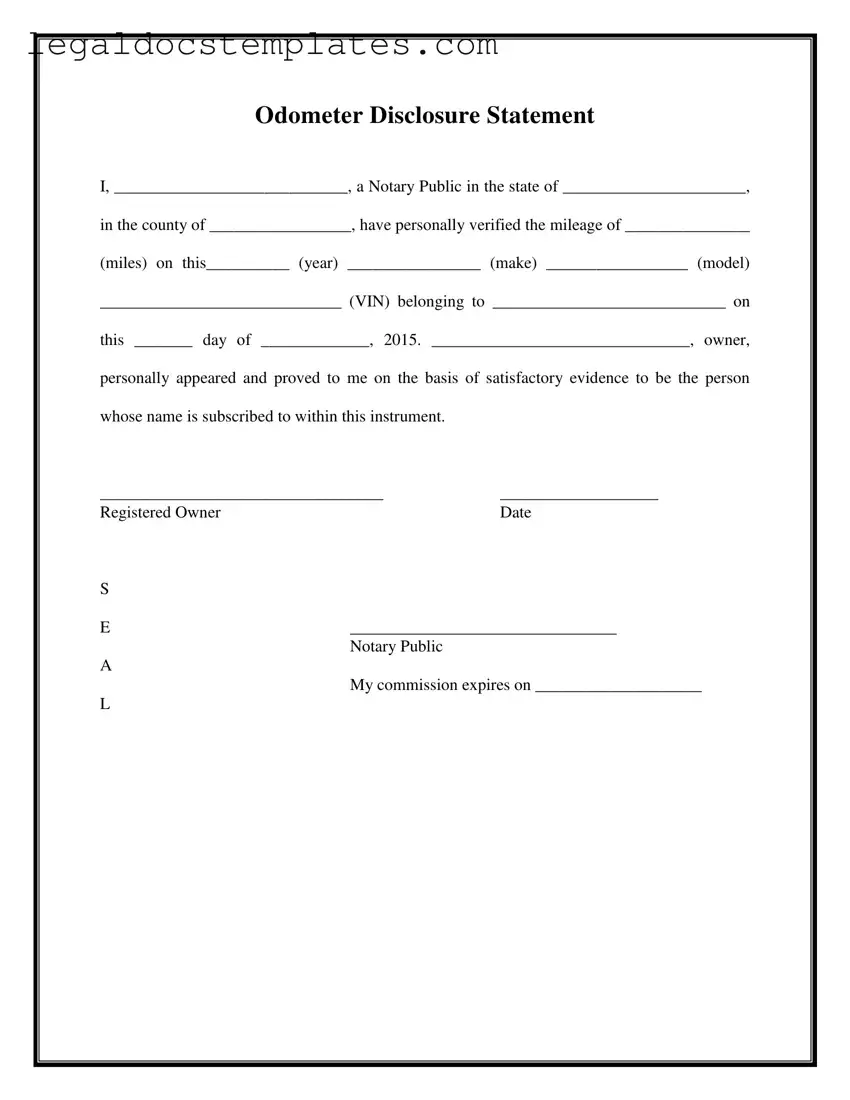The Bill of Sale is one document that shares similarities with the Notarized Odometer Statement form. Like the Odometer Statement, a Bill of Sale provides definitive proof of a transaction, usually for the sale of personal property such as a vehicle. Both documents serve the critical role of establishing a legal record, detailing key information like the identities of the buyer and seller and the specific item being sold, akin to the vehicle and its mileage in the Odometer Statement. In many cases, they are required by law to be filled out accurately to prevent fraud and disputes, ensuring a transparent transaction process.
A Vehicle Title Transfer form is another document closely akin to the Notarized Odometer Statement. This form is used when the ownership of a vehicle is transferred from one person to another. It requires similar information as the odometer form, such as the make, model, year, and VIN of the vehicle, alongside the personal details of the current and new owners. Both documents are crucial in the vehicle sale process and must often be submitted together to the appropriate state department to officially register the change in ownership and accurately record the vehicle’s mileage at the time of the sale.
A Loan Agreement also bears resemblance to the Notarized Odometer Statement in its function and intent. This document outlines the terms of a loan, including the amount borrowed, the repayment schedule, and the interest rate, among other details. Similar to the Odometer Statement, which verifies the mileage of a vehicle, a Loan Agreement verifies the terms of the financial agreement between two parties. Both are formal documents that likely require notarization to add a layer of verification and protection against fraud, ensuring all parties acknowledge and agree to the documented terms.
The Lien Release document is related to the Notarized Odometer Statement, particularly in the context of vehicle ownership and financial transactions. When a loan on a vehicle is fully paid off, a Lien Release is issued by the lender, indicating that the lien on the vehicle's title has been removed, and the owner holds clear title. Like the odometer form, which certifies the mileage, the Lien Release certifies the financial standing of the vehicle relative to loans or debts, both critical to the legal and transparent transfer or sale of a vehicle.
A Warranty Deed is another document that parallels the Notarized Odometer Statement, even though it is commonly used in real estate transactions. It serves to guarantee that the seller holds clear title to the property and has the right to sell it, similar to how the Odometer Statement certifies the accuracy of a vehicle's mileage. Both documents are critical in their respective transaction processes for ensuring that the buyer receives what they are legally promised, with assurance from the seller backed by formal documentation.
Finally, a Power of Attorney document shares certain parallels with the Notarized Odometer Statement. Through a Power of Attorney, an individual (the principal) grants another person (the agent) the legal authority to make decisions on their behalf, which can include the selling of personal or real property. This is somewhat similar to the Odometer Statement, where the vehicle owner's signature and the details provided confirm their consent and disclosure regarding the vehicle’s mileage. Both documents formalize the delegation of authority or the disclosure of information in a legally binding manner, often requiring notarization to prevent fraud and ensure the authenticity of the signatures and information provided.

